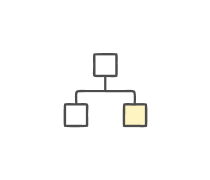Three categories of synchronization used in digital data circuits are
The information-carrying components that occur on either side of a...
What term is associated with the delay or lag introduced in the...
What converts analog signal information into an analog carrier signal?
The only basic waveform in nature is a
If 100 percent modulation is exceeded and there is distortion in the...
When using an ohmmeter to take a resistance reading, what preliminary...
What converts analog signal information into a digital carrier signal?
The upper sideband in a single-sideband suppressed carrier (SSBSC)...
In Time Division Multiplexing (TDM), the transmitting multiplexer will...
What is the main advantage of differential phase shift...
The most common wave-division multiplexing (WDM) system uses how...
How many bits are in the extended superframe format (ESF) framing...
The method of multiplexing the T1 multiplexer uses is
Any actions we take to protect our forces, facilities, and equipment...
In what type of signal does the signal level move to one of the...
Which section of a bit error rate test (BERT) set measures the...
In common associated signaling (CAS), what is the seventh bit in...
Wave-division multiplexing (WDM) creates the virtual channels for...
What form of modulation is insensitive to signal variations?
Individual pulses within a digital signal are
When using a multimeter, which mode should be used if the reading...
What unit is most commonly used in data systems to express...
Jamming a portion of the frequency spectrum is an example of
Which statement best describes a binary with eight-zero...
When is the voltage applied in loop-start signaling?
Bit count integrity problems are primarily caused by
The definition of electronic attack can be found in which publication?
We can express the 6-to-1 improvement of the single-sideband...
What are the two major sections of a bit error rate test (BERT)...
The form of pulse modulation in which the pulse is varied within a set...
The two major types of frame structures are
Which push-buttons would you select to get 125-ohm...
What is the power that is reflected back to an optical source in the...
The process of coding pulse code modulation (PCM) quantized pulses to...
Electronic warfare support includes devices such as
In what type of signal is the information contained in the transition,...
What communications supervisory signal uses a continuous application...
What is an example of analog-to-digital and digital-to-analog...
A digital signal that contains synchronizing bits within the signal...
What communications control signal uses a two-frequency dialing...
What communications information signal uses a signal cycled on and off...
What type of error is the result of two successive logic one pulses of...
How many bits per character of a 16-step pulse-code modulation (PCM)...
When using a multimeter, which mode should be used if the reading is...
In what common channel signaling (CCS) mode are the messages relating...
What are the two principle weighting characteristics in use with...
Which of the following is not considered an analog...
When a multimeter has three input terminal jacks, which jack...
Which option is a characteristic of synchronous data operation?
Which statement best describes an alternate mark inversion...
What communications information signal uses a continuous 350-Hz and...
In quadrature-phase shift keying (QPSK) the radio frequency (RF)...
How many bits are in the D4 framing sequence?
The purpose of the miniature ON/OFF switches on a breakout box is...
Amplitude modulation (AM) requires a bandwidth that is
What type of framing format should you use to conduct a bit error rate...
While timing makes sure the equipment is sending and receiving bits at...
Varying the pulse repetition frequency on a radar set is an example...
What principle of operation does the time domain reflectometer use to...
The major difference between conditioned di-phase (CDI) and other...
Digital coding techniques such as binary with eight-zero substitution...
A modulated waveform that contains a carrier plus two sidebands for...
The amount of phase shift in a phase modulation (PM) signal is...
When performing a bit error rate test (BERT), what determines the size...
Attenuation distortion is caused by
The amount of deviation in a frequency modulation (FM) signal is...
On a breakout box, how many RS-232 key interface signals can be...
Quantized analog modulation is actually
















